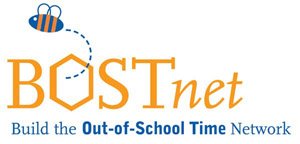For those of us who attended the recent conference on Expanded Learning Time sponsored by Massachusetts 2020, one message was made very clear. Schools need more time to foster high impact student learning. While I am not going to debate the rationale of that here, it did get me thinking about youth development.
My son entered Boston Public Schools in first grade and from that time has participated in a youth arts program for about 15 hours a week. This program has a very intentional mission to promote positive adult-child relationships, positive self-identity, creative expression and community/cultural awareness. It has a project-based structure that is based on 9-week classes that ends with a performance week where kids and parents enjoy the outcomes of every class. Each week my son gets to take extra classes on book making, video-production, theater and creative arts, tree-house design, swimming, basketball, etc. Over the course of a regular school year, he gets over 500 hours of informal learning and positive youth development. At the end of this year, he will have had more than 2100 extra hours of support, equal to 2 FULL YEARS OF SCHOOL.
The social and academic impact on my son has been amazing. The staff is dedicated to a vision of inspiring children and providing them the opportunity to explore who they are as individuals. They do this, often, through force of will. Like all programs they experience high staff turnover and are constantly struggling to find resources to pay salaries, rent and utilities. Staff are young and from the community, but all share a very creative outlook on life that they bring to the program and the children who take part. It is an inclusive program that often works with children that have both physical and cognitive disabilities, including turrets syndrome, ADHD, and obsessive-compulsive disorders. They do this primarily through patience, family engagement, and an inherent sense of community responsibility because they do not receive additional support to work with special needs children. Yet, they are very successful. The program is licensed by the EEC to serve 45 children (K-5) and enrollment is generally about 50/50 between families with vouchers and families who pay tuition out-of-pocket.
Programs like this one are extraordinarily valuable to communities and youth. They provide the time and the kind of community-based support that fosters healthy youth development and academic success. If a child is fortunate enough to participate in these types of programs from the time they are in first grade until they graduate they will receive additional learning and enrichment equal to over 7 years of school. Now that is amazing!
While few of us would argue that many students and many schools can and will improve under an expanded learning time initiative, let us not forget the hundreds of youth development programs in the city of Boston that already do this work. Lets create new streams of funding to support these programs that are not tied to the education system and their incessant need for accountability. Lets understand that learning is a collective community value and responsibility and we need a mixed system that supports both schools and community-based organizations. There is an objective value in supporting safe, supportive and engaging opportunities for children and youth that are not tied to outcome measures dictated by tests or standards. As many of our current funding streams align more closely with the Department of Elementary and Secondary Education, programs that foster healthy youth development are becoming more vulnerable.
16 years ago

No comments:
Post a Comment